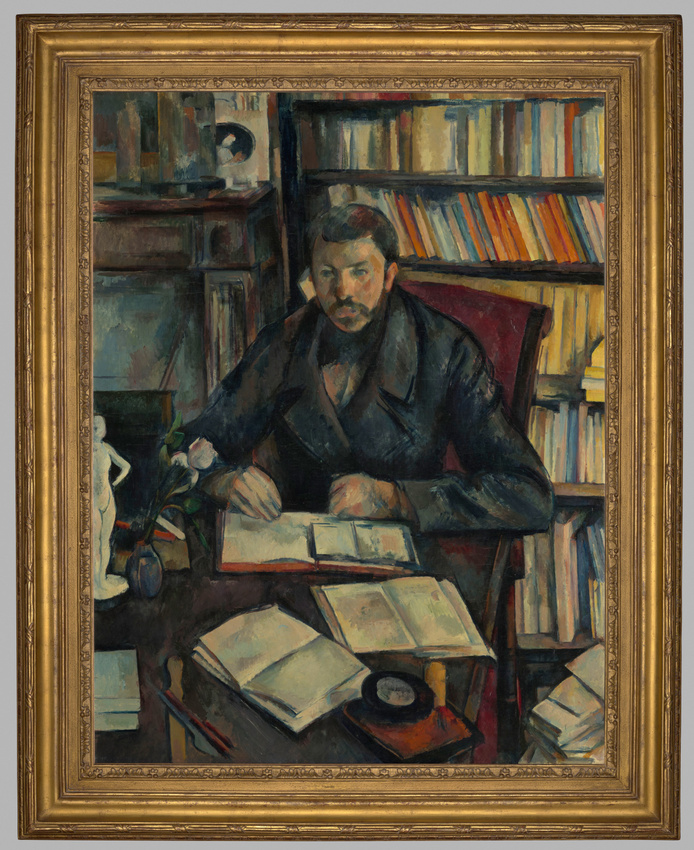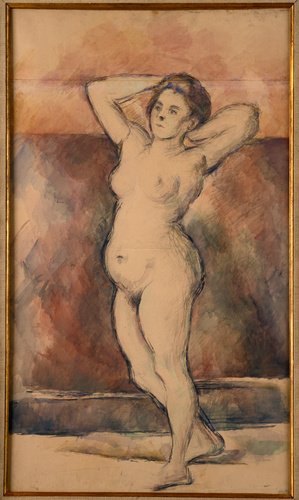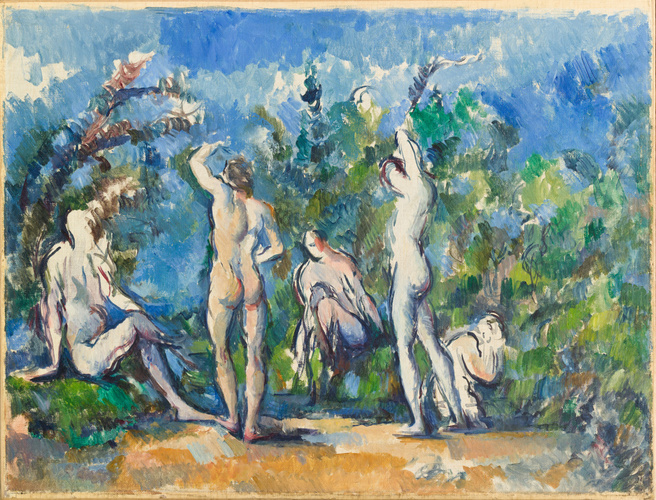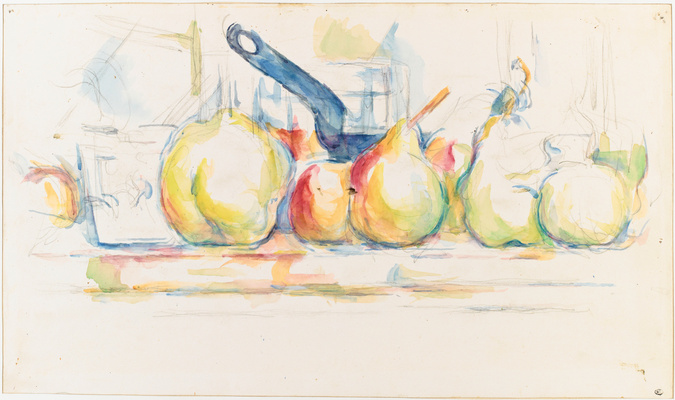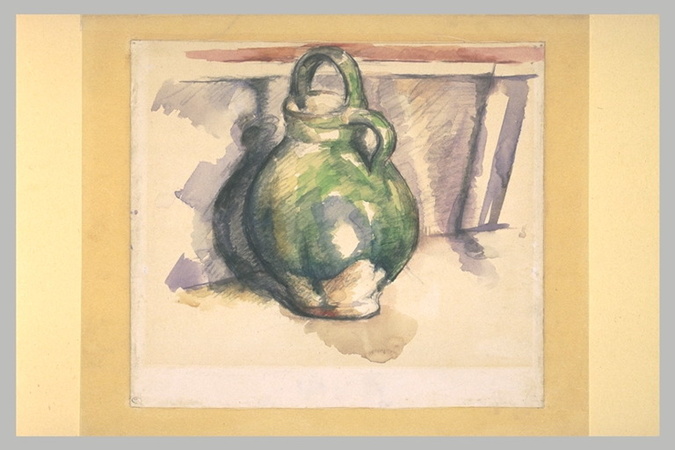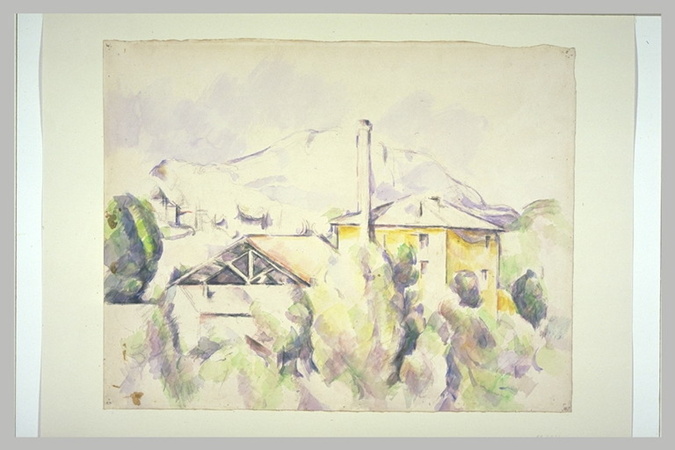Gustave Geffroy
During 1894, Gustave Geffroy wrote several articles
praising Cézanne's painting. To show his gratitude, Cézanne offered to paint the critic's portrait in the spring of 1895. The writer taken as a model by a painter he was supporting was an established genre. There is the portrait of Zola by Manet (1868, Musée d'Orsay), and that of Duranty by Degas (1879, Glasgow, The Burrell Collection), where a similar motif of bookshelves can be seen. But unlike these two examples, it is clear in this case that Cézanne and Geffroy were not well acquainted.
The figure of Geffroy forms a strong triangle in the centre of the painting. The setting – books, inkwell, rose, Rodin statuette – identifies the activities and tastes of the subject, without any feeling of complicity. Moreover, Cézanne's gratitude gradually gave way to irritation with his subject whom he found too eclectic in his artistic tastes and too disrespectful of religion. This irritation quickly turned into outright hostility, if one is to believe the account of Joachim Gasquet who spoke of "the sort of inexplicable hatred that Cézanne bore Gustave Geffroy, in spite of his articles and the wonderful picture he promoted of Cézanne - a dislike he often expressed to me, either by letter or in conversation".
Cézanne delayed painting the face and hands to the last moment, and finished by leaving them incomplete. The result is an image of an opaque, mysterious, even threatening character. The fact that it is not finished makes the image unusually striking.
The painting fascinated the future cubists, Braque and Picasso above all, for the structure of the bookcase, geometric and yet with unusual perspectives, and for the bold use of space on the table surface. This work was also one of the most admired paintings at the Retrospective Exhibition of the works of Cézanne at the 1907 Autumn Salon.

